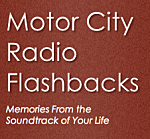 From the MCRFB NEWS archive: 1964
From the MCRFB NEWS archive: 1964
NEW YORK — On a July afternoon 25 years ago, a handful of radio listeners heard a musical program free from the usual frying, sputtering and crashing of hitch -hiking static that characterized customary radio reception.
The program, broadcast by Station W2XMN, at Alpine, N. J., on July 18, 1939, marked the birth of regularly scheduled broadcasting by frequency modulation radio, an invention of Maj. Edwin H. Armstrong, a Columbia University professor of electrical engineering.
Not many more than 25 FM receivers were in existence at that time to pick up that first FM program, relayed by Station WQXR in Manhattan. In contrast, today there are more than 1,200 FM broadcast stations in operation in the U. S. and their programs are heard by an audience estimated by the National Association of FM Broadcasters at a seven-day cumulative figure of 13,796,000.
WQXR observed the anniversary Saturday with a recreation of the first program. The program included the first two selections broadcast on that date, Haydn’s Symphony No. 100 and Tchaikovsky’s “Francesca da Rimini.”
It appears that the broadcasting of classical music at the debut of FM established a precedent that follows through today. The greater majority of FM outlets program primarily classical music or conservative instrumental versions of standards. (MCRFB note: see our current feature Detroit Radio FM Highlights – July 12, 1964 – go here).
FM in the past few years, however, has greatly increased its programming fare with jazz, folk, spoken word and even contemporary rock music.
The development of stereo has probably done more to bolster FM than any other factor during the past quarter century.
The conversion of many FM stations to stereo and the more diversified music formats have been, and certainly will become even a greater boon to the record industry. The key to sales, as most top record industry promotion executives will admit. is exposure of the product available. The more exposure the better.
Several weeks ago the FCC gave a big boost to the development of FM by announcing that by August 1965, jointly owned AM -FM stations in cities of more than 100,000 population will have to cut program duplication to 50 per cent of the FM broadcast week.
The FCC made the announcement in connection with the lifting of the year-long “freeze” on applications for new AM’s or major changes in AM facilities.
Again, the results can only be positive for the record industry reasoning that the more stations that hit the air the more programming material -mainly music – will be needed. No matter what music formats are adopted by new AM’s and 50 per cent FM’s, the record industry is slated to benefit through the opportunity to have its product exposed on many more broadcast stations. END
___
(Information and news source: Billboard; July 25, 1964)
A MCRFB Note: See our current feature Detroit Radio FM Highlights, July 12, 1964, GO HERE.
![]()

